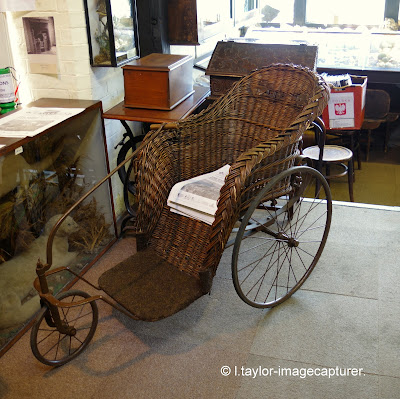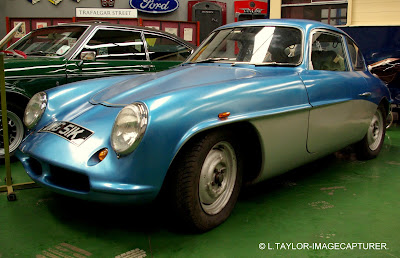SPOONBILL.
Equipped with a flattened, broad tipped bill, the spoonbill is heron like, but as white as an egret. It is a bird of marshes and lakes with extensive shallow water, but in winter it may also be found on coastal estuaries, striding through the shallows with its rather human like walk. This and its tall, upstanding presence, make it an unmistakable bird in Europe. It nests on shallow platform of sticks and reed stems in reeds or tree; in colonies, rarely mixed with other species, 3 or 4 eggs, 1 brood, April - July. Feeding - holds bill slightly open, partially submerged, and sweeps it through water from side to side, to catch fish, molluscs and crustaceans. Spoonbills are mostly found in east Europe.
~~~~<<<<>>>>~~~~
MUTE SWAN.
A large familiar bird, strikingly white and obvious even at great range. The mute swan is generally quite tame, even semi domesticated in its behaviour and choice of habitat. Territorial pairs are aggressive, even to people or their dogs, using impressive displays of arched wings and loud, hissing calls. Nesting - huge pile of vegetation at waters edge, up to eight eggs, 1 brood, March - June. Feeding - plucks vegetable matter from short grass in fields and salt marshes, pulls the same from shallow water or upends in deeper water. Small cygnets ( mute swans young ) often seeks shelter and refuge between the wings of a parent swans.
~~~~<<<<>>>>~~~~
GREYLAG GOOSE.
Of all grey geese, the greylag most resembles the farm yard goose. It is also the most easily seen grey goose in the United Kingdom because it has been introduced in many lowland areas where sizable flocks are now semi tame and resident all year round. Winter visitors are still wild and shy. Nesting - sparsely lined ground nest, often on island, four to six eggs, 1 brood, May - June. Feeding - grazes, plucks grass and cereal shoots, digs for roots and waste grain.
~~~~<<<<>>>>~~~~
CANADA GOOSE.
Originally imported from north America as an ornamental bird, the Canada goose is now well established in many areas as a largely resident and rather tame bird, most have lost their migratory instinct. A remarkably successful and adaptable bird, it is sometimes considered a messy and aggressive pest in town parks. Nesting - down lined scrape on ground, often on small island, loosely colonial, five or six eggs, 1 brood, April - June. Feeding - grazes on grass and cereals, takes some aquatic plants.
~~~~<<<<>>>>~~~~
Male.
Female.
MALLARD.
The most widespread and familiar of all the ducks, this is the one most often seen in town parks, coming for bread on lakes or on the riverside, but there are also many that are truly wild and shy. Nesting - down lined nest on ground or in raised sites, nine to thirteen eggs, 1 brood, January - August. Feeding - takes small aquatic invertebrates, seeds, roots, shoots and grain from shallows while upending or dabbling or from dry ground. Mallard ducklings will follow the mother to water. They stay under her care until they are able to take care of themselves.
~~~~<<<<>>>>~~~~
TUFTED DUCK.
This is a common diving duck, swimming and feeding in flocks, with individuals disappearing under in search of food. Tufted ducks may be semi tame and come for food to ponds in town parks. Even flocks on lakes and reservoirs often tolerate a close approach, or simply swim away from disturbance. Nesting - down lined hollow in long vegetation close to water, eight to eleven eggs, 1 brood, May - June. Feeding - dives underwater from surface to find molluscs and insects.
~~~~<<<<>>>>~~~~
GANNET.
The biggest of the European seabirds, related to the even larger Pelicans. The gannet is typically seen as a brilliant white bird offshore, circling and diving for fish or flying singly or in groups. It is highly social at its nesting colonies and loosely so at sea. The gannets forward facing eyes and cushioned head and neck equip it to pinpoint fast moving fish and dive headlong to catch them. Nesting - pile of seaweed and debris on broad ledge high above the sea, one egg, 1 brood, April - July. Feeding - catches fish such as mackerel and pollack underwater in shallow and sloping dive from air or vertical dives from greater height.
~~~~<<<<>>>>~~~~
MOORHEN.
A bird of the waters edge and nearby marshy ground, rather than open water. The moorhen is widespread and surprisingly common in many areas as it can occupy anything from a wet ditch to a large lake. Small, loose groups move slowly , feeding on damp meadows, running to cover if disturbed, and even breaking into brief flight. Only rarely is a moorhen seen way out on open water, looking a little uncomfortable in such an exposed situation. Nesting - shallow bowl of leaves and stems, in vegetation from low reeds to high in trees but usually just above water, often in fallen or drooping branch, five to eleven eggs, two or three broods, April - August. Feeding - picks up seeds, fruit, shoots, roots, snails, insects and occasionally eggs, from damp ground or shallows.
~~~~<<<<>>>>~~~~
COOT.
These quarrelsome water birds are often found on wide open water on large reservoirs or flooded pits, they are rarely on the sea. They are also frequently seen feeding on nearby grassy banks. Feeding flocks are usually bigger and more coherent than the loose groups of moorhens. Coots are also obviously bigger and more heavily built. Nesting - large bowl of wet vegetation, in overhanging branches or reeds, or on mound of semi floating debris at waters edge, six to nine eggs, one or two broods, April - August. Feeding - dives easily to feed underwater, bouncing back up like a cork, eats grass, seeds, shoots, snails, tadpoles and similar small aquatic creatures.
~~~~<<<<>>>>~~~~
BLACK HEADED GULL.
Common and familiar, this is a small, agile, very white looking gull and is never truly black headed, it is one of the hooded gulls with a dark brown head when breeding but a pale head with a dark ear spot in other plumages. Its dark underwing gives a flickering effect in flight. It has always been a frequent bird inland, by no means confined to the sea or the coast. Numbers have increased somewhat with extra reservoirs and flooded pits providing safe roosts and refuse tips offering abundance of food. Nesting - pile of stems on ground in vegetation, on marsh, two or three eggs, 1 brood, May - June. Feeding - takes worms, seeds, fish and insects from ground and water, catches insects in flight.
~~~~<<<<>>>>~~~~
CHAFFINCH.
One of Europe's most abundant birds, the chaffinch forms an obvious species pair with the brambling. The two often feed together outside the breeding season. Their general shape, pattern and behaviour are very similar. Chaffinches breed in separate territories, proclaimed by males singing loudly from prominent perches, but they are social birds at other times. They are often very tame, coming for food in car parks and picnic sites and frequently visiting gardens. Nesting - neat, perfectly camouflaged cup of grass, leaves, moss, cobweb and lichen against trunk of tree or bush, four to five eggs, 1 brood, April - May. Feeding - eats insects in summer, mostly caterpillars from foliage, otherwise takes seeds, shoots and berries, visits bird tables for seed mixtures, especially sunflower seeds.
~~~~<<<<>>>>~~~~
HOUSE SPARROW.
Recent declines have seen numbers in gardens and town parks reduce and farmland flocks disappear but house sparrows remain as widespread as ever. They are familiar in towns and gardens and even farmland concentrate around buildings. Males are easily recognized, although they look quite like tree and Spanish sparrows. Females lack the bold patterns and can be taken for some finches, but in reality are equally distinct. House sparrows are typically social and noisy birds. Nesting - untidy nest of grass and feathers in roof space, cavity in walls, tree cavity or more openly in creepers and around wires, three to seven eggs, one to four broods, April - August. Feeding - usually on ground, taking seeds, buds, roots, berries and many insects for young, catches some insects clumsily in flight, visits bird tables for nuts, seed mixtures and kitchen scraps.
~~~~<<<<>>>>~~~~


































































